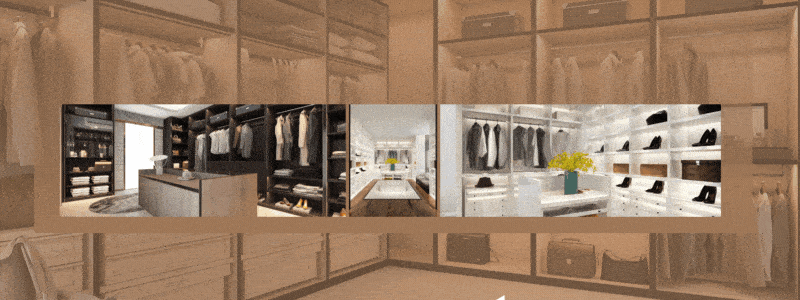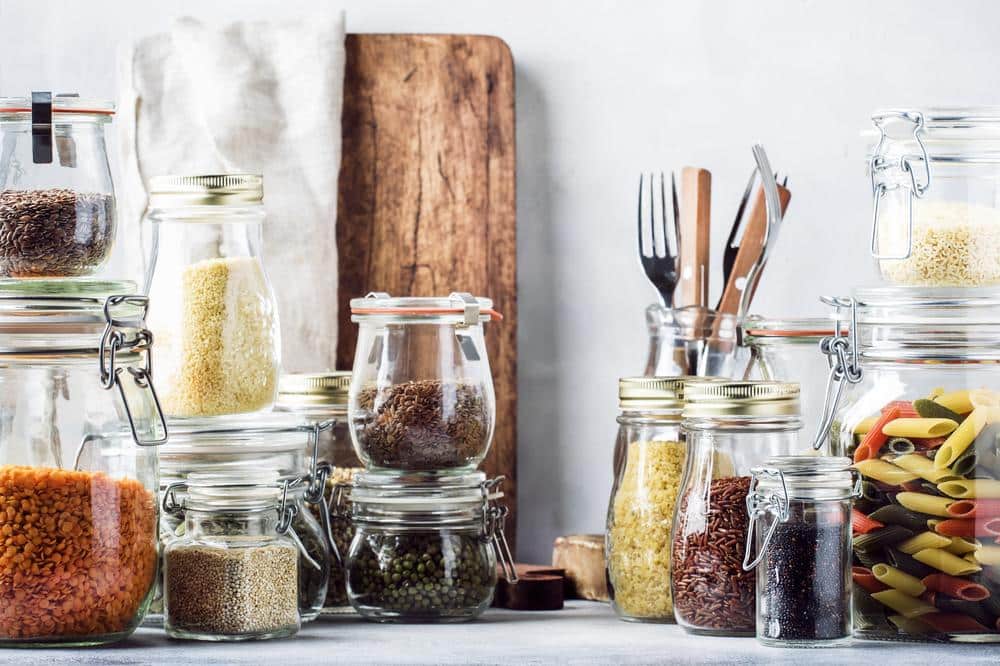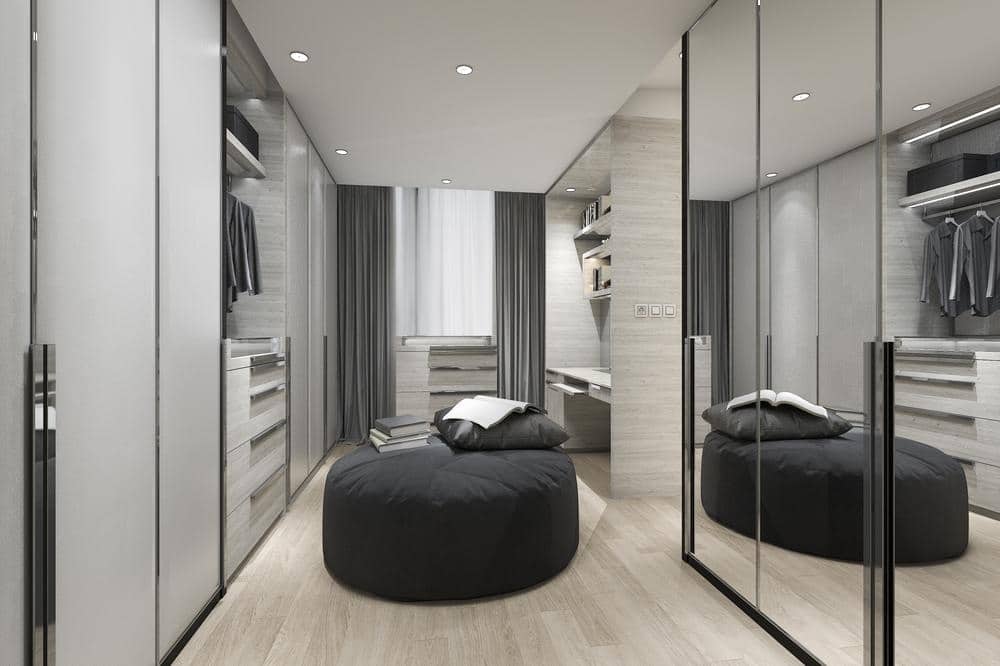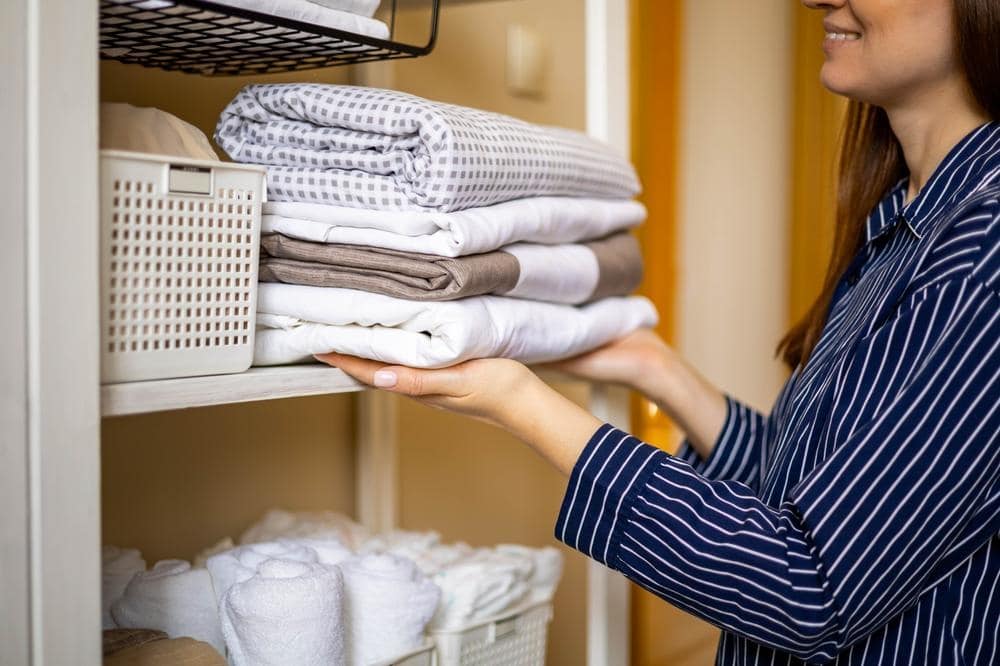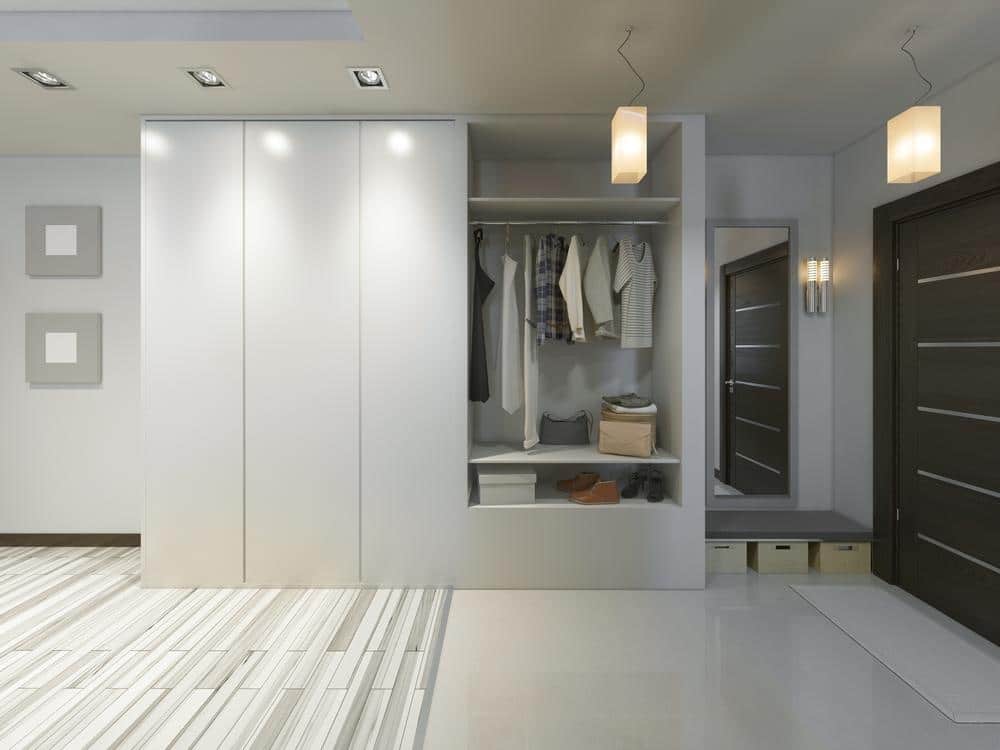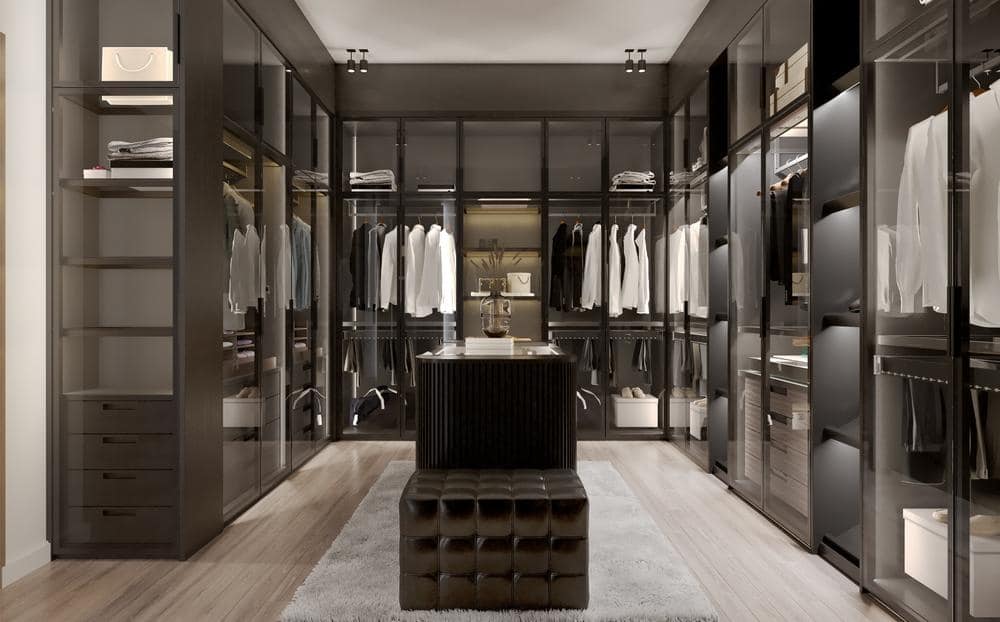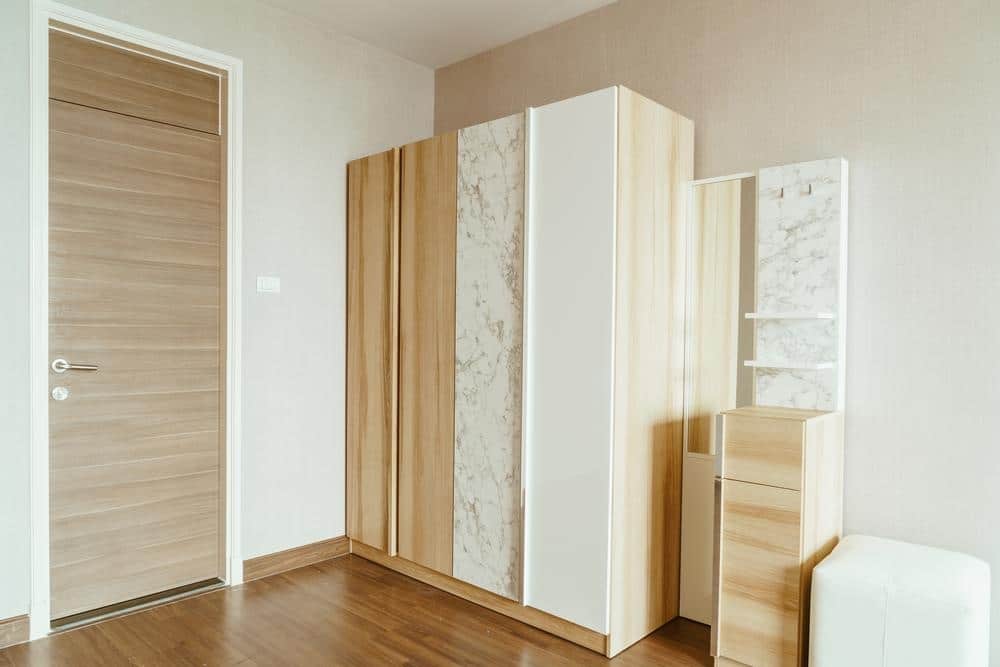Modern pantry ideas can be an extremely useful addition to any kitchen. Different homes may have different pantries, and there are numerous pantry ideas to help you stay organized. All pantries, regardless of design or size, serve the same purpose: to store items and reduce clutter in your kitchen.
A pantry can be a completely separate room for storing electronic devices, dry goods, kitchen supplies, and other items. It can also refer to a few kitchen shelves used to store packaged foods, spices, and other edibles that do not belong in the fridge or freezer. In any case, keeping your pantry neat and organized will make it more useful and easy to find what you need.

1-The Right Organizers in The Pantry Ideas
Table of Contents
- 1-The Right Organizers in The Pantry Ideas
- 2-Shelving and Storage That Works in The Pantry Ideas
- 3-Avoid Unnecessary Bulk Items in The Pantry
- 4-Give The Pantry Some Decor
- 5-Store More Than Food in The Pantry Ideas
- 6-Build a Pantry
- What Goes in a Pantry
- Strategies for Organizing a Pantry
- Pantry Room Organization Ideas
- Space Saving Pantry Ideas
- Best Way to Store Chips in Pantry
- Organized Pantry
- What is a Working Pantry?
- Creating a Counter Pantry
- Organizing Your Kitchen Clutter
- How can I keep my kitchen pantry organized?
- How do I organize my pantry like a pro?
- How can I organize my pantry for cheap?
- How can I make my pantry look good?
- What makes a good pantry?
- How do you build a perfect pantry?
- How do I organize my pantry?
- How do I make my pantry aesthetic?
- How to design a custom pantry?
- What is the best type of pantry?
- How can I make my pantry look expensive?
- What items should always be in your pantry?
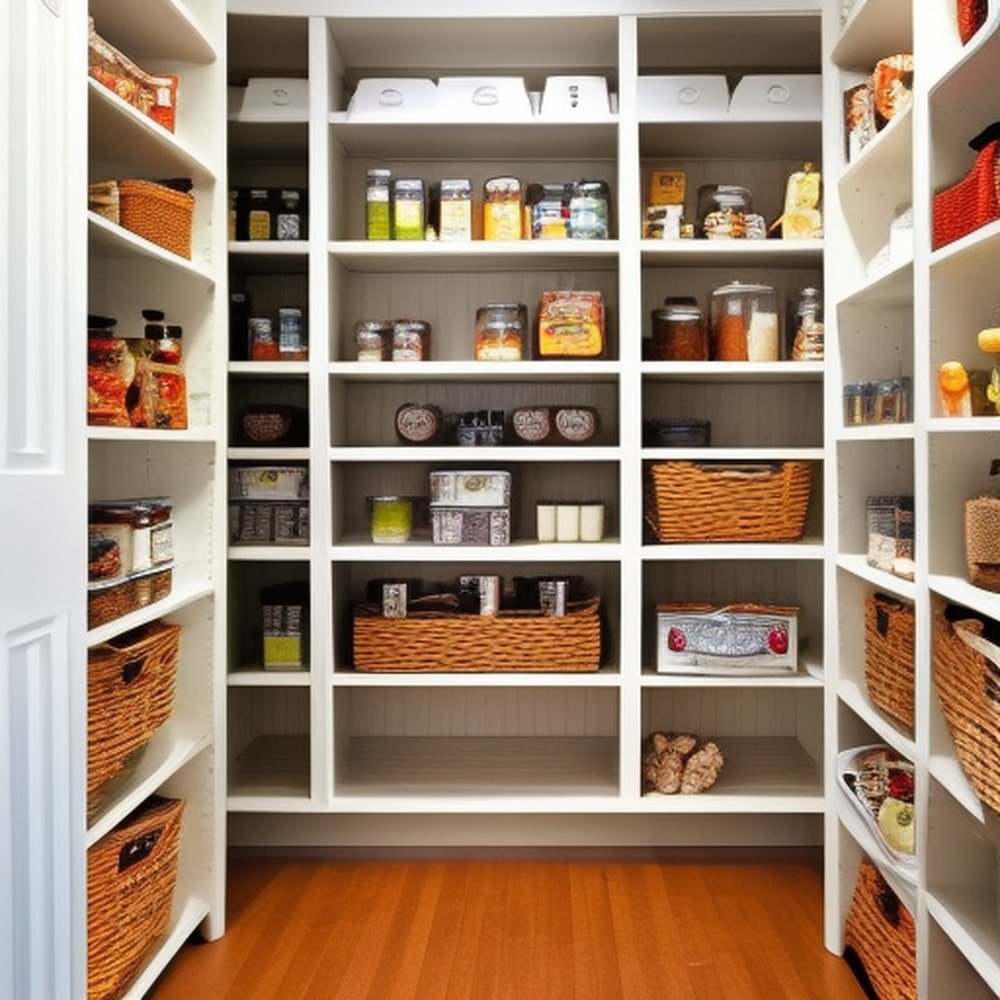
Finding the appropriate kitchen organizers for each item is a good place to begin. There are numerous food storage options available, ranging from plastic containers to glass jars or classic candy jars that are practical, stylish, or both. Decide what works best for your family, pantry space, and food requirements, and then get to work organizing!
Some foods, such as canned vegetables, should be stored in their original containers. Others are frequently better off being transferred elsewhere. Cereals, for example, will go stale if cardboard boxes aren’t always perfectly closed but will last much longer in tightly sealed plastic containers. You can also save space and make your pantry less cluttered by transferring foods that come in oddly shaped or soft packages, such as pretzels, into sturdy containers with defined sides.
Utilize Clear Bins & Canisters

Clear bins and canisters are the keys to an organized pantry. They allow you to take inventory of what’s inside, quickly find anything that needs replacing or adding again (especially if it’s airtight), and prevent stale food from going bad due in part to keeping bugs out!
Use Broad Labels (Or No Labels at All)
Labels are important for organizing your food, but be mindful of how you label them. For example, if an item is meant to go into both categories, then use “ snacks” instead so that it doesn’t get left behind because there won’t always be another category called “popcorn.” You can also opt out entirely and just put things where they belong with clear containers or bins!
Add Rolling Bins Organizers in The Pantry
For those who want to save space in their pantry, rolling bins are an excellent choice. These storage units can hold heavier items like drinks and products without taking up too much room on the lower level of your cupboard–and they’re also easier than picking things up laboriously! Simply roll out what you need, then put it away again afterward.
Add Turntables Organizers in The Pantry
Lazy Susans are the perfect solution for any cramped corner in your pantry. They allow you to quickly access everything without constantly knocking things over or getting up from your seats, no matter how many times you turn around!
2-Shelving and Storage That Works in The Pantry Ideas

The type of shelving and storage you select will be determined by the available space. If you have a very narrow space, you may need to use open shelving, whereas larger spaces may be able to use doors.
Another option is to install user-friendly pull-out pantry drawers, which turn an ordinary cupboard into a well-organized drawer. You can see the contents of a drawer without having to dig around in the back.
Baskets are an excellent organizing tool that is also reasonably priced. Wire shelving is also a low-cost option for adding height to your pantry. Even a wire shelf attached to the inside of a door can provide some extra storage space.
3-Avoid Unnecessary Bulk Items in The Pantry
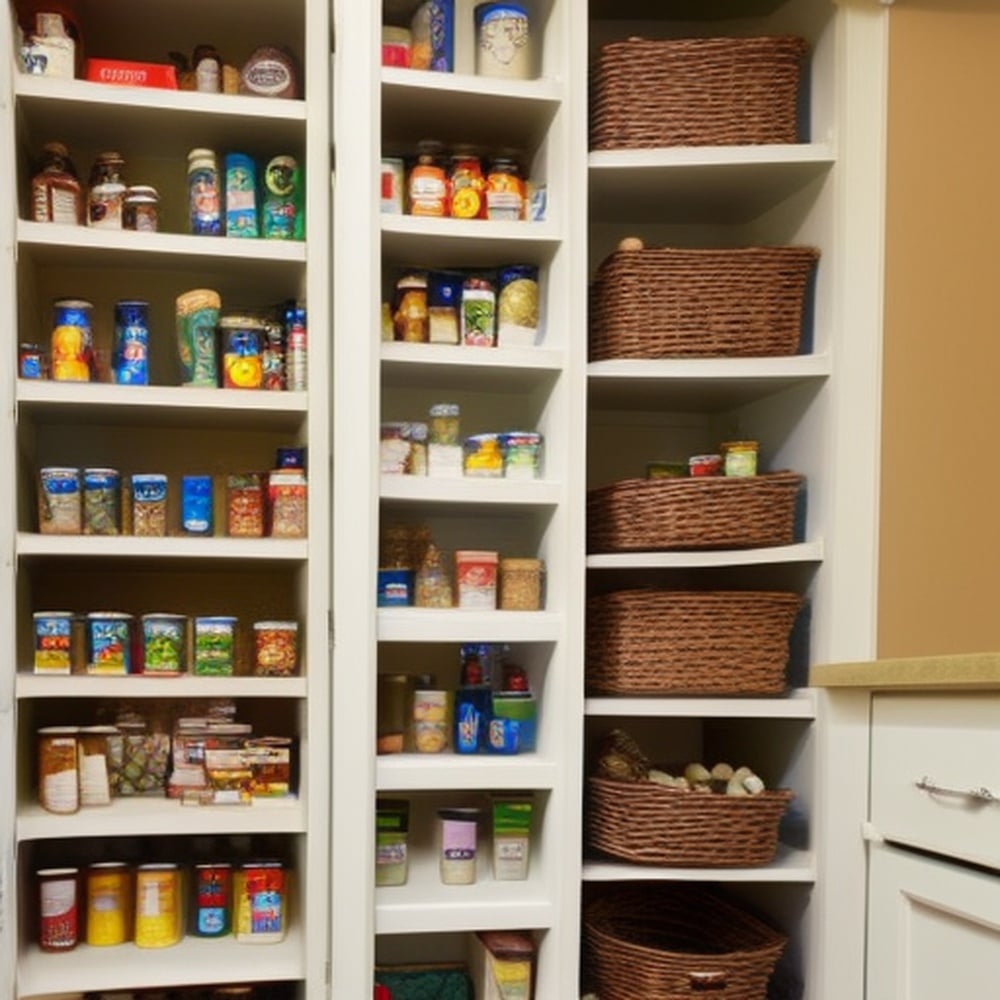
Sure, if you have a large family, buying in bulk is a good idea. However, don’t just buy a bunch of food because it’s on sale. The food may go bad before you get a chance to use it, bulk-sized containers can produce more food waste, and having too many jars, boxes, and cans can take up valuable pantry real estate.
If you do buy in bulk, make sure you have storage space ready before bringing a large amount of stuff home. Also, keep labels on hand for anything you repackage.
4-Give The Pantry Some Decor

Just because your pantry is small doesn’t mean you should ignore its design. The decor doesn’t have to be elaborate or expensive, but even the simplest touches can improve the experience of searching through a well-organized pantry.
Wallpaper allows you to personalize your storage space while adding a fun splash of color. If you don’t want to deal with real wallpaper, look into removable wallpaper or contact paper. It’s simple to hang, and the variety of styles available today is vast. Plus, when you’re ready for a change, it’s simple to remove for a quick and low-cost makeover.
You can also paint the backs of the shelves. Chalkboard paint on a pantry’s inside doors is entertaining and functional. Use the wall to keep a grocery list, notes for your family, or just a fun place for the kids to draw.
5-Store More Than Food in The Pantry Ideas
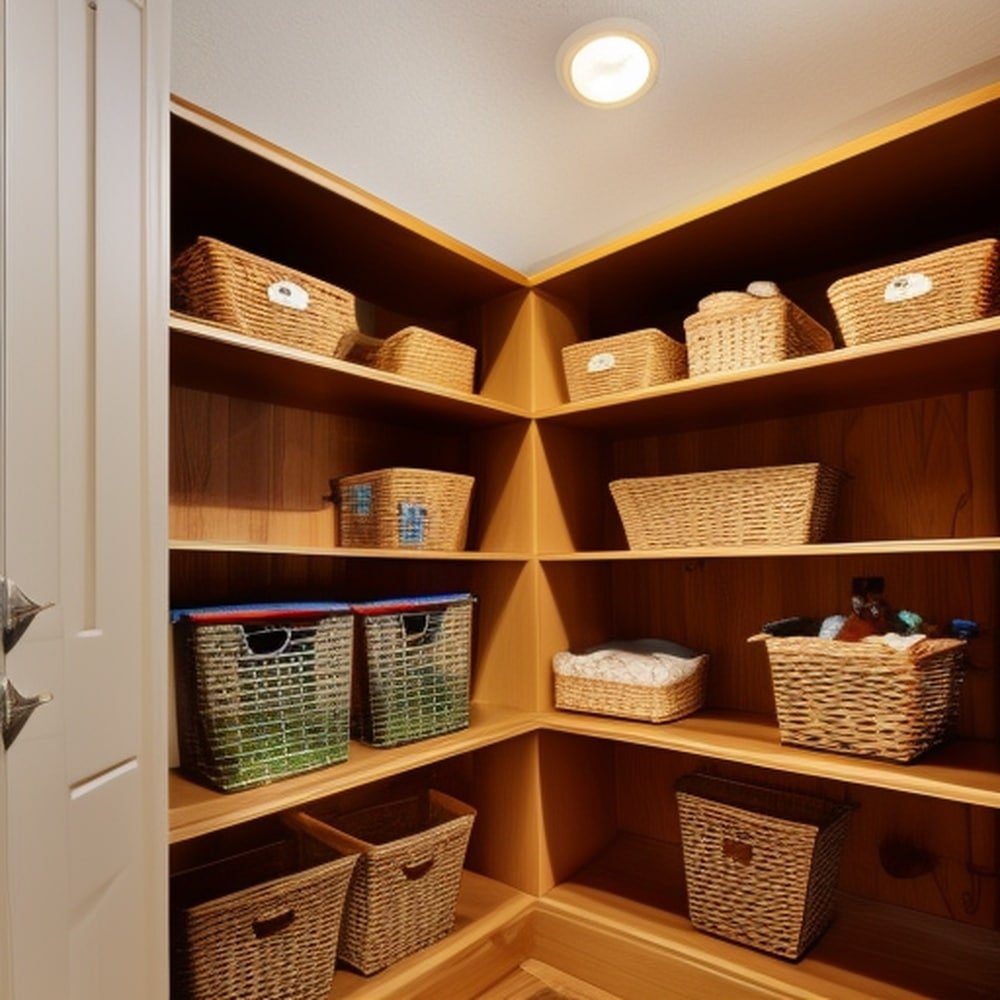
If you have a large pantry, storing your appliances there will allow you to save valuable counter space in the kitchen. This is the ideal location for a stand mixer, slow cooker, or other large appliances that you only use occasionally. Oversized or unusually shaped baking dishes could also be stored on higher shelves in your pantry.
6-Build a Pantry

If your home lacks a pantry and you need more storage space, consider building one. There are numerous options available, ranging from a traditional closet-style pantry to innovative designs for the smallest of spaces.
Consider any usable space in your home and brainstorm ideas for converting it into a useful pantry. For example, you could convert the well-known Ikea Billy Bookcase into a pantry, take over an underutilized closet, or create a pantry space in a different part of the house, such as the basement.
What Goes in a Pantry
When you’re organizing your pantry space, the first step is deciding what goes in a pantry. You don’t want to overcrowd your pantry with items that don’t need to be stored there. The pantry should contain all the food items, snacks, and ingredients you use regularly. This includes canned goods, spices, oils, herbs, grains, and pasta. You should also include baking supplies like flour, sugar, and baking powder. Additionally, storing condiments, nuts, and seeds in the pantry is a good idea.
Strategies for Organizing a Pantry
Organizing a pantry can seem like a daunting task, but it doesn’t have to be. To make the most of your pantry space, you should start by sorting items together. This way, you’ll be able to find what you need quickly. Additionally, it’s a good idea to label items so you can easily identify them. You can also use stackable containers to store grains, pasta, and smaller items like nuts and seeds.
Pantry Room Organization Ideas
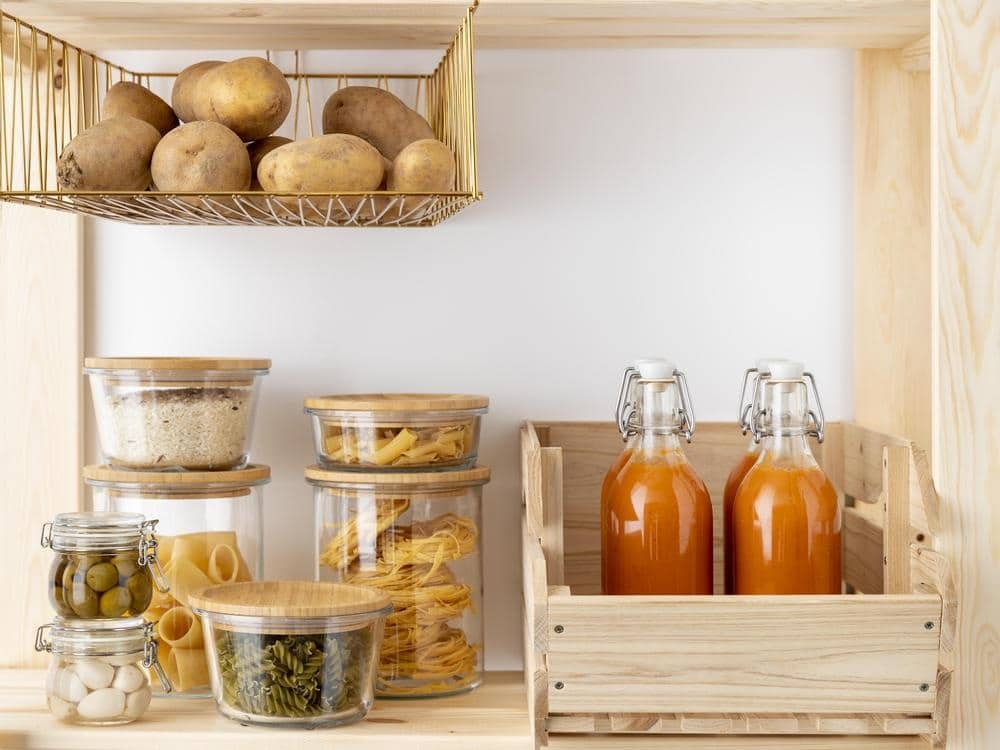
Organizing the pantry room is just as important as organizing the items inside. A great way to do this is by grouping items according to their use. For example, you can keep baking items in one section, canned items in another, and spices in a third. This will make it easier to find what you need. You should also use baskets and containers to help keep your pantry organized.
Space Saving Pantry Ideas
Regarding space-saving pantry ideas, you can use pegboards or magnetic strips to hang items like pots, pans, and measuring cups. Additionally, you can use hooks to hang mugs and other items that take up a lot of space. You should also use shelves for spices and herbs and invest in stackable containers for grains and pasta.
Best Way to Store Chips in Pantry
If you’re looking for the best way to store chips in the pantry, the answer is simple – invest in an airtight container. This will help keep the chips fresh and crunchy. You should also keep storing the chips in a cool, dark place to maintain flavor and texture. Additionally, it’s a good idea to label the chips so they can easily be identified.
Organized Pantry
An organized pantry is essential to managing your time and budget. It can help you prioritize what needs to be replenished, reduce food waste, and store only the items your family uses. By creating an organized pantry, it will enable you to identify what staples are necessary, plan out meals or snacks ahead of time, make shopping lists faster, save money by knowing when items are on sale and/or if coupons are available for them as well as keep track of expiration dates. The organized pantry will also contribute to a more efficient space in which everything is placed strategically, making maximum use of all its surfaces.
Creating a working pantry can also be a great way to maximize space and organize your kitchen. An organized pantry can make storing food and other items easier and keep your kitchen clutter-free.
What is a Working Pantry?
A working pantry is a storage area usually located in the kitchen used to keep food, house small appliances, and store tableware. The pantry can either be a stand-alone unit or it can be integrated into the kitchen cabinetry. Working pantries are essential to any kitchen, making it easy to store food and other items within easy reach.
The size and shape of a working pantry can vary greatly depending on the space and design of your kitchen. Many pantries are designed to fit into a corner of the kitchen and are usually rectangular. However, if space is limited, there are models that can be fitted into tighter corner spaces. Shelving is usually adjustable, allowing pantry items to be organized according to size and height.
Creating a Counter Pantry
An alternative to a traditional pantry is a counter pantry. Counter pantries are usually built into kitchen counters and offer more storage space than a traditional pantry. They can also provide additional counter space while also providing storage.
Counter pantries are typically made from wood or laminate materials. Depending on your design preference, these can be customized to match the kitchen. Shelves can be positioned and adjusted according to size and need. There are also built-in drawers for extra storage.
When planning your counter pantry, make sure to measure your kitchen counter space accurately. This will ensure that the pantry fits properly and does not interfere with existing kitchen fixtures. It is also important to consider kitchen traffic flow to ensure that the pantry does not obstruct any pathways.
Organizing Your Kitchen Clutter
Once the pantry is created and installed, it’s time to organize your kitchen clutter. Start by decluttering the pantry and removing any items that are no longer needed. This will make it easier to organize the pantry and keep it neat.
Store items that are used often in easy-to-reach locations. Placing items in labeled bins can also make it easier to find items quickly. If items are cluttered, consider adding additional shelving or adjustable racks to store items more efficiently.
Finally, keep in mind that kitchen clutter is inevitable, no matter how organized your pantry is. The key is to go through the pantry and tidy it up periodically. This will ensure that your pantry remains neat and organized.
How can I keep my kitchen pantry organized?
Keeping your kitchen pantry organized makes meal preparation and clean-up easier. There are several steps you can take to keep it neat, tidy and clutter-free:
First, designate a specific shelf or cabinet space for each item. This way, you know where everything goes and can easily identify what’s missing when you need it.
Second, store items by type and frequency, with the most frequently used items stored in the most accessible locations.
Third, clearly label your pantry shelves, so everyone knows where to find what they’re looking for.
Finally, invest in clear storage containers or bins to store items and avoid overcrowding your shelves. This will keep it looking tidy and make it easier for you to find what you’re looking for.
How do I organize my pantry like a pro?
Organizing your pantry like a pro requires careful planning and organization. Start by taking inventory of what you already have in your pantry, then create categories for each type of food, such as baking supplies, snacks, breakfast items, and canned goods. Once you’ve established the categories, take stock of your available space and decide which items you will store in each section of the pantry. Once everything is sorted, you can start to organize it. Invest in clear air-tight containers or baskets to store items in, stack cans and other pantry staples, use shelf risers to maximize vertical space, and label shelves so everyone knows where things go.
How can I organize my pantry for cheap?
Organizing your pantry on a budget is possible with creativity and clever storage solutions. Firstly, consider investing in clear plastic containers or easily stacked bins organized into categories. This will help you keep track of what you have and make it easier to find items when needed. Secondly, utilize available wall space by adding shelves and hooks for extra storage. Lastly, consider using spice racks and pegboards to help organize smaller items that don’t fit well in containers or baskets.
How can I make my pantry look good?
To make your pantry look good, consider decanting dry goods into clear containers – this not only keeps items fresh but also reduces visual clutter. Additionally, coordinating colors in your pantry can create a visually pleasing effect, and introducing some greenery or natural elements can add life to the space. If you have an open pantry, keep it vibrant by displaying eye-catching food items.
What makes a good pantry?
A good pantry is both functional and aesthetically pleasing. It should have ample storage space with designated zones for different categories of items, such as canned goods, baking ingredients, and snacks. Clear bins or containers can help keep things organized while also making it easy to see what you have on hand. A good pantry should also be easily accessible and ideally located near your kitchen for convenience.
How do you build a perfect pantry?
Building a perfect pantry involves thoughtful planning and organization. Start by deciding on the layout that best suits your needs – this could be shelving, drawers, or a combination of both. Then, organize your items by category, placing like items together. Consider using stackable plastic containers or turning shelves into drawers for efficient use of space.
How do I organize my pantry?
Organize your pantry by sorting items by use and placing like items together. This could mean keeping all your baking supplies in one area, canned goods in another, and snacks in a separate spot. Use clear bins or containers to keep items visible and organized. You can also hang a pegboard for additional storage or repurpose crates for a rustic touch.
How do I make my pantry aesthetic?
Making your pantry aesthetic involves paying attention to both organization and design. Clear containers can give a sleek, cohesive look while also keeping items visible. Playing with patterns, bringing in nature, and sourcing vintage storage can add character and charm. Also, consider updating your hardware or using paint to give the area a fresh look.
How to design a custom pantry?
Designing a custom pantry involves identifying your specific needs and preferences. Consider your shopping habits, cooking style, and the types of food you frequently store. Then, design your pantry layout accordingly. You might want to include features such as a ladder for reaching high shelves, open shelving for displaying attractive items, or built-in appliances for added convenience.
What is the best type of pantry?
The best type of pantry depends on your individual needs and the space available in your home. Some people prefer a walk-in pantry for its ample storage space and ability to house a variety of items, while others might prefer a pull-out pantry for its space-saving design. The key is to choose a pantry that fits your space and complements your lifestyle.
How can I make my pantry look expensive?
To give your pantry an expensive look, consider elevating it with color coordination and high-quality materials. Features like a ladder or open shelving can add a high-end touch. You might also want to source vintage storage solutions or use luxurious materials for your countertops or shelves.
What items should always be in your pantry?
Essential pantry items can vary based on individual dietary preferences and cooking habits, but some staples include grains (like rice and pasta), canned goods (like beans and tomatoes), baking ingredients (like flour and sugar), oils and vinegars, and a variety of seasonings. It’s also a good idea to keep a selection of fast-fix appetizers and snacks on hand for unexpected guests or emergencies.

Experienced Executive Assistant with a demonstrated history of working within the furniture industry. Skilled in furniture styling, visual communication, project management, and proficiency with Adobe Creative Suite. Strong arts and design professional with a (BA) Creative Direction for furniture design focused on Industrial Design from School of the Art Institute of Chicago.
![Can A Pantry Have A Window? [With Tips On How To Light A Pantry]](https://bienalclosets.com/wp-content/uploads/2022/02/pexels-polina-tankilevitch-3735147-scaled.jpg)


